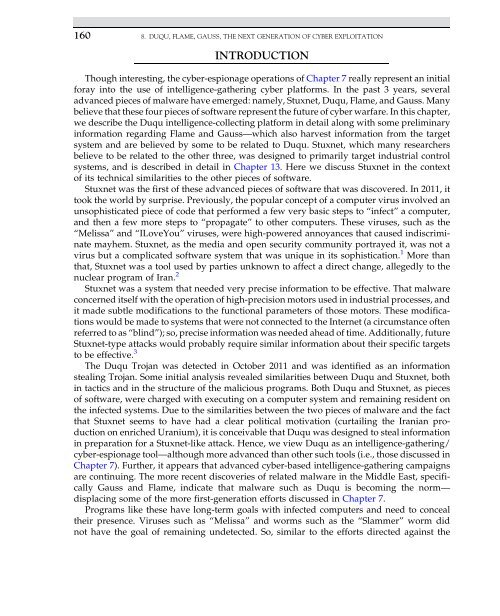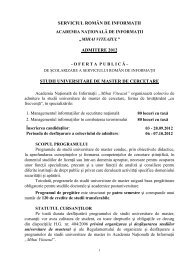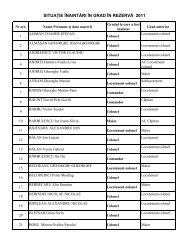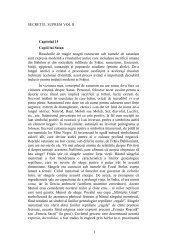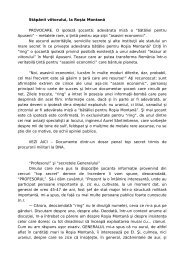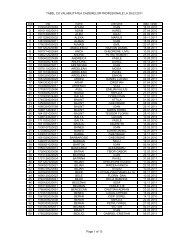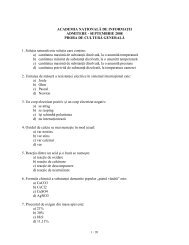Introduction to Cyber-Warfare - Proiect SEMPER FIDELIS
Introduction to Cyber-Warfare - Proiect SEMPER FIDELIS
Introduction to Cyber-Warfare - Proiect SEMPER FIDELIS
Create successful ePaper yourself
Turn your PDF publications into a flip-book with our unique Google optimized e-Paper software.
160 8. DUQU, FLAME, GAUSS, THE NEXT GENERATION OF CYBER EXPLOITATIONINTRODUCTIONThough interesting, the cyber-espionage operations of Chapter 7 really represent an initialforay in<strong>to</strong> the use of intelligence-gathering cyber platforms. In the past 3 years, severaladvanced pieces of malware have emerged: namely, Stuxnet, Duqu, Flame, and Gauss. Manybelieve that these four pieces of software represent the future of cyber warfare. In this chapter,we describe the Duqu intelligence-collecting platform in detail along with some preliminaryinformation regarding Flame and Gauss—which also harvest information from the targetsystem and are believed by some <strong>to</strong> be related <strong>to</strong> Duqu. Stuxnet, which many researchersbelieve <strong>to</strong> be related <strong>to</strong> the other three, was designed <strong>to</strong> primarily target industrial controlsystems, and is described in detail in Chapter 13. Here we discuss Stuxnet in the contex<strong>to</strong>f its technical similarities <strong>to</strong> the other pieces of software.Stuxnet was the first of these advanced pieces of software that was discovered. In 2011, it<strong>to</strong>ok the world by surprise. Previously, the popular concept of a computer virus involved anunsophisticated piece of code that performed a few very basic steps <strong>to</strong> “infect” a computer,and then a few more steps <strong>to</strong> “propagate” <strong>to</strong> other computers. These viruses, such as the“Melissa” and “ILoveYou” viruses, were high-powered annoyances that caused indiscriminatemayhem. Stuxnet, as the media and open security community portrayed it, was not avirus but a complicated software system that was unique in its sophistication. 1 More thanthat, Stuxnet was a <strong>to</strong>ol used by parties unknown <strong>to</strong> affect a direct change, allegedly <strong>to</strong> thenuclear program of Iran. 2Stuxnet was a system that needed very precise information <strong>to</strong> be effective. That malwareconcerned itself with the operation of high-precision mo<strong>to</strong>rs used in industrial processes, andit made subtle modifications <strong>to</strong> the functional parameters of those mo<strong>to</strong>rs. These modificationswould be made <strong>to</strong> systems that were not connected <strong>to</strong> the Internet (a circumstance oftenreferred <strong>to</strong> as “blind”); so, precise information was needed ahead of time. Additionally, futureStuxnet-type attacks would probably require similar information about their specific targets<strong>to</strong> be effective. 3The Duqu Trojan was detected in Oc<strong>to</strong>ber 2011 and was identified as an informationstealing Trojan. Some initial analysis revealed similarities between Duqu and Stuxnet, bothin tactics and in the structure of the malicious programs. Both Duqu and Stuxnet, as piecesof software, were charged with executing on a computer system and remaining resident onthe infected systems. Due <strong>to</strong> the similarities between the two pieces of malware and the factthat Stuxnet seems <strong>to</strong> have had a clear political motivation (curtailing the Iranian productionon enriched Uranium), it is conceivable that Duqu was designed <strong>to</strong> steal informationin preparation for a Stuxnet-like attack. Hence, we view Duqu as an intelligence-gathering/cyber-espionage <strong>to</strong>ol—although more advanced than other such <strong>to</strong>ols (i.e., those discussed inChapter 7). Further, it appears that advanced cyber-based intelligence-gathering campaignsare continuing. The more recent discoveries of related malware in the Middle East, specificallyGauss and Flame, indicate that malware such as Duqu is becoming the norm—displacing some of the more first-generation efforts discussed in Chapter 7.Programs like these have long-term goals with infected computers and need <strong>to</strong> concealtheir presence. Viruses such as “Melissa” and worms such as the “Slammer” worm didnot have the goal of remaining undetected. So, similar <strong>to</strong> the efforts directed against the


